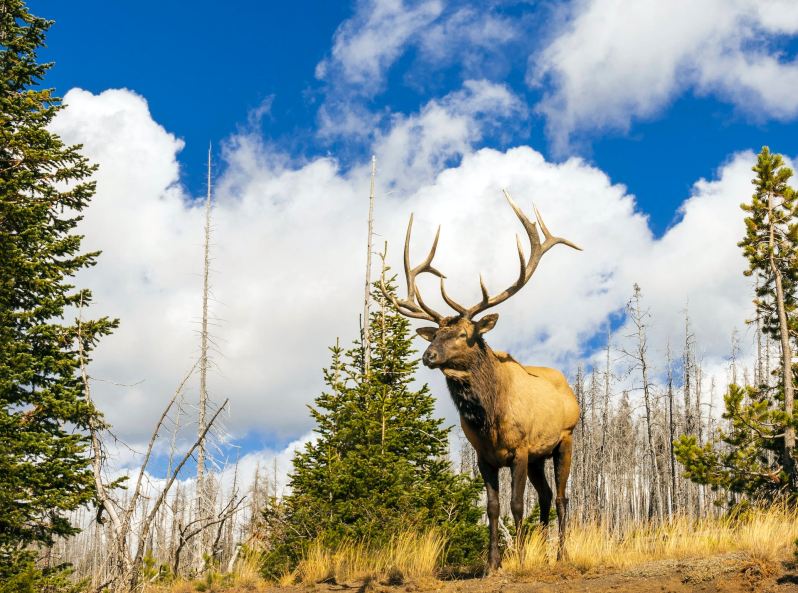
Yellowstone National Park is one of our most beautiful national treasures, and for good reason. The park sees about three million visitors every year, every one of them aching to see the breathtaking sights. But what happens when visitors make alarming choices that put themselves and wildlife at risk? Recently, visitors witnessed yet another alarming incident that shed light on the disregard some visitors have for park safety guidelines. This man’s reckless act of dangling his baby in front of an elk for a photo op has sparked outrage and concern among park enthusiasts and conservationists alike.
Stay at least 25 yards away from elk
The incident unfolded when a visitor, oblivious to the inherent dangers and proper etiquette around wildlife, approached a grazing elk. Disregarding the National Park Service’s recommended safety distance of 25 yards, the individual turned his back to the elk and extended his baby towards the animal, presumably for a snapshot. The heart-stopping moment was captured by another park visitor. The content was then reposted via Instagram on the account TouronsOfYellowstone—a platform dedicated to highlighting irresponsible behavior within US National Parks. See the video below.
While the man in the video calls this animal a moose, it’s an elk. While typically docile, elk are wild animals with unpredictable behavior. Encroaching upon their space can provoke defensive responses, potentially leading to attacks and severe injuries. The National Park Service has emphasized the importance of maintaining a safe distance from wildlife to ensure both human safety and the well-being of the animals themselves.
Park guidelines explicitly state the recommended distance to stay away from various wildlife species is a minimum of 25 yards for animals like elk and a significant 100 yards from predators like bears and wolves. These regulations are put in place not just for visitors’ safety but also to protect the natural habitats and behavior patterns of the park’s inhabitants.
The repercussions of such heedless behavior extend beyond the immediate danger to oneself and the animal. They also disrupt the delicate balance of the ecosystem and instigate stress among wildlife, potentially altering their behavior and interactions with humans.
The incident at Yellowstone serves as a stark reminder of the importance of responsible tourism and the necessity of adhering to park regulations. While the allure of capturing close-up encounters with wildlife is undeniable, it should never come at the expense of safety or respect for the animal’s natural habitat.
Visitors to national parks must prioritize education on wildlife safety measures, exercise caution, and maintain a respectful distance from the park’s inhabitants. Whether admiring the majestic creatures from the safety of a vehicle, using binoculars, or a telephoto lens, there are plenty of ways to appreciate and cherish wildlife without compromising safety.
In the wake of this incident, visitors to these cherished natural sanctuaries must uphold responsible behavior, ensuring the preservation of these invaluable landscapes and the creatures that call them home. Yellowstone, like all national parks, is a treasure that deserves our admiration, protection, and utmost respect.
Editors' Recommendations
- These national parks have the most gorgeous winter hiking trails
- Forget overcrowded national parks – these are the best hiking trails in national forests
- You can mountain bike into Death Valley and watch the next solar eclipse on October 14
- Podcasts every outdoors enthusiast will enjoy: The Crux, Dirtbag Diaries, and more
- Jackson Hole Mountain Resort owners sell to local families, keeping resort hyper-local indefinitely




